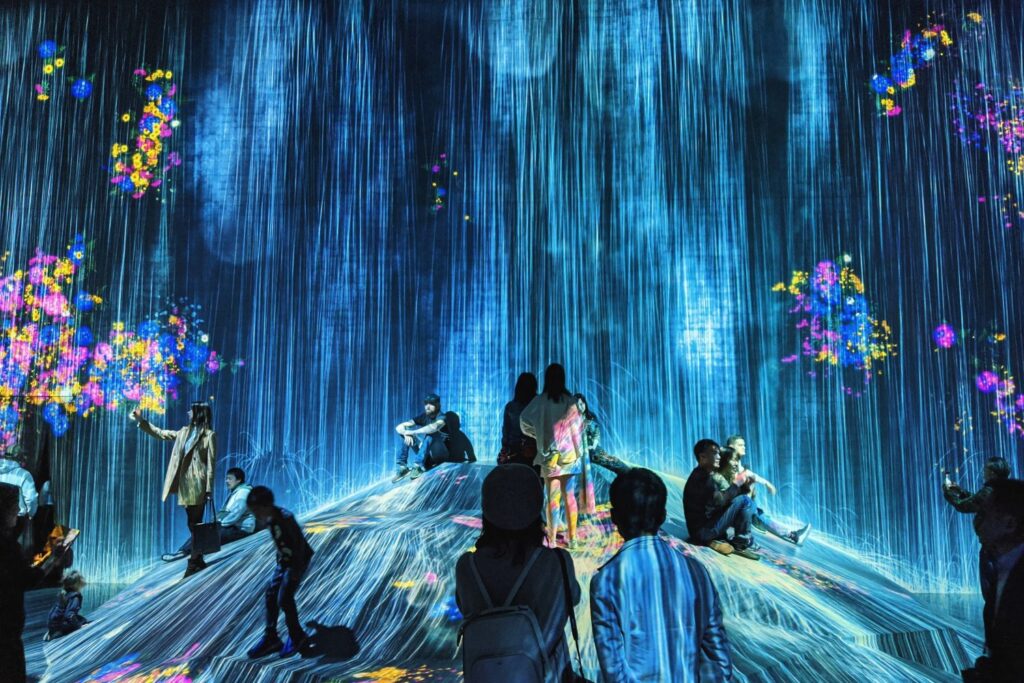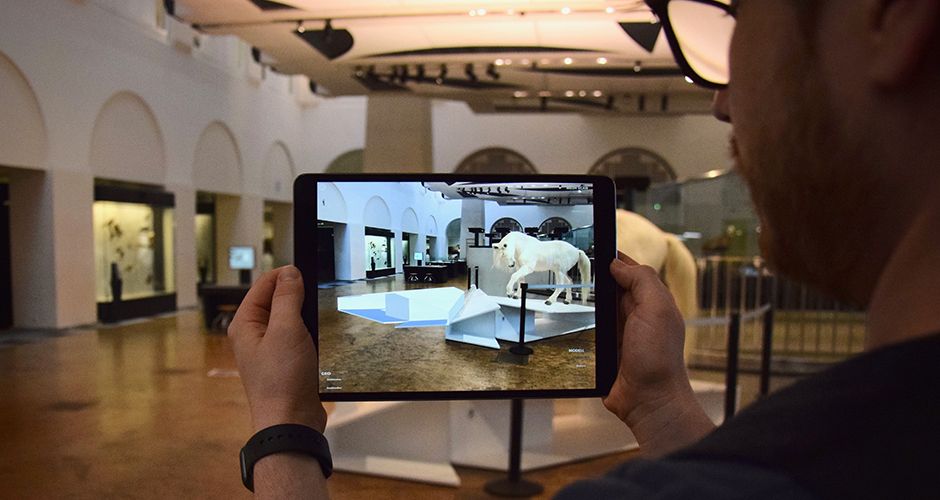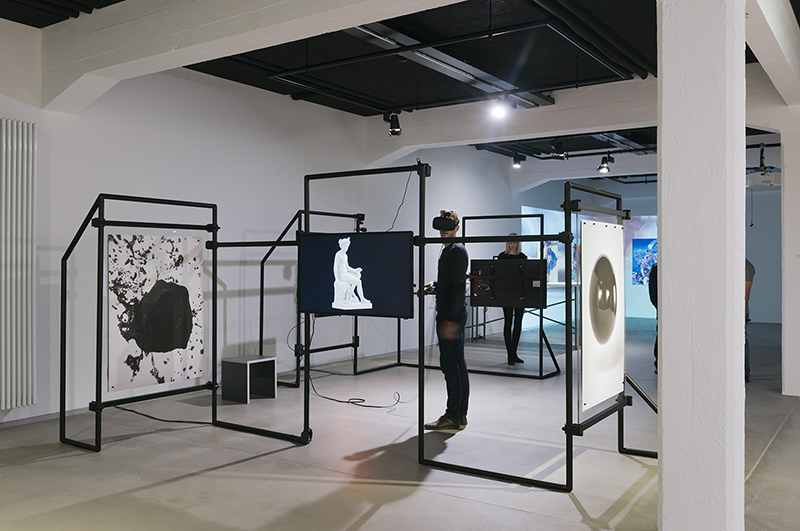🏛 건조하고 먼지 쌓인 사실의 낭송은 사람들의 상상력을 오랫동안 사로잡기 힘듭니다.
그렇기 때문에 오늘날 박물관은 학습을 훨씬 더 재미있고 흥미진진하게 만드는 대화형 경험에 중점을 둡니다.
무엇인지 배우려면 계속 읽으십시오. 인터랙티브 박물관, 주최 아이디어 및 전시회를 멋지게 만드는 팁.
차례
- 회사 개요
- 인터랙티브 박물관이란?
- 인터랙티브 박물관 전시회를 효과적으로 개최하기 위한 팁
- 인터랙티브 박물관에 대한 아이디어
- 전통 박물관과 인터랙티브 박물관의 차이점
- 박물관은 어떻게 더 상호 작용할 수 있습니까?
- 인터랙티브 박물관 전시의 중요성
- 테이크 아웃
회사 개요
| 누가 인터랙티브 박물관을 발명했나요? | 제프리 쇼 |
| 세계적으로 유명한 인터랙티브 박물관 5곳은 무엇인가요? | SPYSCAPE 뉴욕, ArtScience Museum Singapore, Cité de l'espace – 프랑스, Haus der Musik – 비엔나 및 싱가포르 국립 박물관. |
인터랙티브 박물관이란?
전통적인 전시는 흥미로운 전시물을 보여주지만, 인터랙티브 전시는 직접 체험할 수 있도록 해줍니다. 단순히 수동적인 관람객이 아니라, 새로운 아이디어를 탐구하는 능동적인 참여자가 되는 것입니다.
인터랙티브 박물관의 큐레이터는 단순히 유물을 전시하는 것이 아니라, 전시물에 생명을 불어넣는 디자인 인터랙티브 활동을 전시합니다.
그들은 터치스크린, 시뮬레이션, 가상 현실과 같은 기술을 사용하여 맥락을 제공하고 물체 뒤에 숨겨진 이야기를 들려줍니다.
체험형 전시는 여러 감각을 활용합니다. 보고, 듣고, 만지고, 심지어 경험의 일부를 냄새 맡고 맛볼 수도 있습니다.
당신은 사물을 직접, 그리고 비유적으로, 붙잡음으로써 그 사물을 붙잡습니다. 이렇게 의미 있고 몰입감 넘치는 상호작용은 평생 잊지 못할 경험을 선사합니다.

AhaSlides로 이벤트를 대화형으로 만들어보세요
AhaSlides 프레젠테이션에서 제공하는 최고의 실시간 여론조사, 퀴즈, 게임으로 더욱 재미있게 청중의 참여를 유도하세요!
🚀 무료 가입
인터랙티브 박물관 전시회를 효과적으로 개최하기 위한 팁

인터랙티브 박물관을 설립하려면 약간의 노력이 필요하지만 장기적으로는 확실히 성과를 거둘 것입니다. 그리고 그것의 정수를 확실히 파악하려면 아래의 10가지 팁을 박물관 전시에 대한 실용적인 아이디어로 활용하세요👇
1 – 직접 체험해 보세요. 방문자는 사물을 보는 것뿐만 아니라 사물을 만지고 조작하기를 원합니다. 물리적으로 참여할 수 있는 대화형 요소를 제공합니다.
2 – 이야기를 들려주세요. 방문자가 빠져들고 자신이 일부라고 상상할 수 있는 더 큰 내러티브에 인공물을 연결합니다. 관련성이 있고 매력적으로 만드십시오.
3 – 멀티미디어를 활용하세요. 오디오, 비디오, 애니메이션, 그래픽을 물리적 요소와 결합하여 방문자의 감각을 자극하고 학습 효과를 극대화합니다.
4 – 사회적인 관계를 맺으세요. 소그룹 협업 및 토론을 위한 디자인. 학습은 공유된 발견을 통해 더욱 풍부하고 기억에 남게 됩니다.
5 – 맥락을 제공하세요. 방문객에게 유물에 대한 배경 지식을 제공합니다. 유물이 무엇이고, 언제, 어디서, 어떻게, 그리고 왜 중요한지 설명하세요. 맥락이 없는 유물은 의미가 거의 없습니다.
6 – 텍스트를 제한하세요. 텍스트를 너무 많이 사용하면 방문자는 능동적인 탐험가가 아닌 수동적인 독자가 됩니다. 텍스트를 간결하게 유지하고 시각적 요소와 상호 작용으로 보완하십시오.
7 – 명확한 목표를 설정하세요. 방문자가 떠나길 바라는 주요 주제, 메시지 및 요점을 파악하십시오. 그런 다음 해당 목표 달성을 중심으로 전시회를 설계합니다.
8 – 테스트하고 반복하세요. 테스트 청중으로부터 피드백을 받고 전시의 학습 목표를 달성하는 데 얼마나 도움이 되는지에 따라 대화형 요소를 수정/개선합니다.
9 – 도전적으로 만들어보세요. 적절한 난이도는 방문자가 꾸준히 읽고 생각을 확장하도록 동기를 부여할 수 있습니다. 하지만 너무 답답하게 만들지 마세요.
10 – 발견을 허용하세요. 방문자에게 선형적이고 규정된 경로를 따르지 않고 자신의 조건에 따라 탐색할 수 있는 자유를 제공하십시오.
전체적인 목표는 방문객이 인터랙션, 스토리텔링, 멀티미디어, 그리고 맥락을 활용하여 기억에 남고 의미 있는 방식으로 유물을 탐험하도록 적극적으로 참여시키는 것입니다. 타겟 고객과 함께 프로토타입을 테스트하고 피드백을 바탕으로 개선해 나가는 과정은 방문객에게 생동감 넘치는 최종 인터랙티브 전시를 선사하는 데 도움이 될 것입니다✨
인터랙티브 박물관에 대한 아이디어
#1. 증강 현실(AR)

증강 현실 경험은 전시물을 생생하게 만들고 예상치 못한 재미있는 방식으로 정보를 공유합니다.
대화형 멀티터치 화면을 회전시켜 다양한 각도에서 볼 수 있고, 대화형 박물관에 대한 디지털 정보를 추가로 볼 수 있으며, 박물관의 과거를 엿볼 수도 있습니다.
방문자는 화면을 직접 돌리고 상호 작용할 수 있으며 이동하면서 추가된 컨텍스트와 깊이를 발견할 수 있습니다.
#2. 가상 현실

현실에서는 절대 가볼 수 없는 곳을 탐험하는 꿈을 꾸어 본 적 있나요? 가상 현실 전시를 통해 가능성은 무궁무진합니다.
티라노사우루스를 가까이서 보고 싶으신가요? 달 위를 걷는 기분을 느껴보고 싶으신가요? 이제 박물관을 나서지 않고도 가능합니다.
VR은 추상적인 것을 구체적으로, 상상의 것을 현실로 만들어내는 능력을 가지고 있습니다. 이것이 바로 이 기술이 사람들의 마음을 완전히 몰입시키는 방식으로 이동시키고, 기존의 전시 방식과는 비교할 수 없는 기억을 만들어내는 힘입니다.
#삼. 멀티 터치 디스플레이 케이스

인터랙티브 전시 디자인은 성공적인 박물관의 가장 중요한 부분 중 하나입니다. 전시를 안전하게 유지하면서도 사람들이 자유롭게 소통할 수 있도록 하는 것은 균형을 맞추는 작업이지만, 적절한 전시 케이스는 그 균형을 잘 맞춰줄 수 있습니다.
방문객은 실제 유물을 만지지 않고도 유리를 만져 회전판을 돌리거나, 세부 사항을 확대하거나, 더 많은 정보를 불러오는 등 상호작용을 할 수 있습니다.
디스플레이 케이스는 사람과 물건 사이의 인터페이스가 되어 상호 작용을 촉진하면서 물건을 보호합니다.
적절한 조명, 고해상도 화면 및 대화형 기능은 단순한 디스플레이 케이스를 몰입감 있는 경험으로 바꿔줍니다.
방문객은 촉각, 시각, 청각을 통해 전시물에 대해 더 많은 것을 알아볼 수 있으며, 전시물 자체는 안전하게 보호됩니다.
#4. 인터랙티브 월

빈 벽에는 무한한 가능성이 숨겨져 있습니다. 하지만 올바른 아이디어로 채우는 법을 안다면 말이죠.
간단한 터치만으로도 숨겨진 정보를 드러낼 수 있고, 애니메이션을 트리거하거나, 방문객을 전시의 사명과 가치와 밀접하게 관련된 가상 환경으로 이동할 수 있습니다.
하이테크, 저마찰 매체 및 전시 디자인을 혼합하여 사용하는 인터랙티브 월은 청중이 떠난 후에도 오래도록 참여하고 영감을 주고 오래도록 유지하는 방식으로 개념에 생명을 불어넣습니다.
#5. 멀티 터치 회전 화면

손가락의 간단한 소용돌이로, 당신은 다시 이동할 수 있습니다 프랑스의 바스티유 데이 1789년이나 선사시대를 실시간으로 놀라운 360도 파노라마로 감상하세요.
멀티터치 회전 화면의 회전 디스플레이는 주변 환경을 탐색하고, 제어하고, 재구성하려는 사람들의 본능적인 욕구를 충족시키며, 그 과정에서 전달하려는 내용을 정확하게 파악합니다.
전통 박물관과 인터랙티브 박물관의 차이점
전통적인 박물관과 인터랙티브 박물관 사이에는 몇 가지 중요한 차이점이 있습니다.
• 전시 – 전통적인 박물관은 관람객이 직접 볼 수 있도록 전시물을 수동적으로 보여주는 정적인 전시를 하는 경향이 있습니다. 인터랙티브 박물관은 방문객이 콘텐츠에 적극적으로 참여할 수 있도록 체험형 전시, 시뮬레이션, 멀티미디어, 그리고 인터랙티브 기술을 통합합니다.
• 학습 – 인터랙티브 박물관은 몰입형 경험을 통해 체험적 학습을 촉진하는 것을 목표로 합니다. 전통적인 박물관은 일반적으로 강의와 일방적인 정보 전달에 더 의존합니다.
• 관람객 역할 – 전통적인 박물관에서 관람객은 관객이나 독자로서 수동적인 역할을 합니다. 반면, 인터랙티브 박물관에서는 관람객이 전시에 능동적으로 참여하고, 스스로 학습 경험을 구성하는 데 있어 더욱 자기 주도적인 역할을 합니다.
• 상호작용성 – 분명히 상호작용 박물관은 터치 스크린, 시뮬레이션, 게임 등의 요소를 통해 전시에 더 높은 수준의 상호작용성을 내장하고 있습니다. 전통적인 박물관은 상호작용성이 낮고 관람을 위해 정적인 물체에 더 의존하는 경향이 있습니다.
• 목표 – 전통적인 박물관의 목표는 문화 유산과 지식을 보존하고 공유하는 것입니다. 하지만 인터랙티브 박물관은 단순히 지식을 공유하는 데 그치지 않고, 방문객의 참여, 체험적 학습, 그리고 몰입형 경험을 통한 변화까지 촉진하는 것을 목표로 합니다.
• 체험 – 인터랙티브 박물관은 관람객에게 교육적인 경험뿐 아니라 재미있고 기억에 남으며 몰입도 높은 경험을 제공하고자 합니다. 전통적인 박물관은 교육적인 측면에만 집중하는 경향이 있습니다.
박물관이 어떻게 더 상호작용적이 될 수 있습니까?
박물관을 보다 상호작용적으로 만드는 몇 가지 핵심 요소가 있습니다.
• 터치스크린 및 인터랙티브 전시물 사용: 멀티미디어 인터랙티브 스테이션, 터치스크린 및 체험 활동을 설치하여 방문자가 정적 디스플레이를 수동적으로 보는 대신 콘텐츠에 능동적으로 참여할 수 있도록 합니다. 이것은 경험을 더 기억에 남고 교육적으로 만듭니다.
• 시뮬레이션 및 게임 통합: 시뮬레이션, 가상 현실 경험 및 교육 게임 방문자가 실험하고 선택하고 결과를 볼 수 있는 컬렉션과 관련됩니다. 이는 추상적인 개념과 역사적 사건을 보다 구체적이고 관련성 있게 만듭니다.
• 소규모 그룹을 위한 디자인: 방문자가 대화형 요소의 토론, 공동 작업 및 공유 제어를 통해 함께 탐색하고 발견하도록 장려하는 전시회를 만듭니다. 소셜 학습은 경험을 향상시킵니다.
• 맥락 정보 제공: 텍스트, 타임라인, 비디오, 오디오 및 대화형 타임라인을 사용하여 전시회에 대한 적절한 배경을 제공하여 방문자가 보고 경험하는 것에 대해 풍부한 프레임 맥락을 가질 수 있도록 합니다. 맥락이 없으면 상호 작용은 의미를 잃습니다.
인터랙티브 박물관 전시의 중요성
인터랙티브 박물관 전시는 다음을 통해 방문자 경험을 변화시킵니다.
• 직접적인 상호 작용을 통해 보다 영향력 있는 학습을 촉진합니다.
• 몰입형 시뮬레이션을 통해 호기심, 놀라움, 창의성을 고취합니다.
• 정적인 디스플레이만으로는 불가능했던 새로운 경험을 창출하기 위해 새로운 기술을 활용합니다.
테이크 아웃
인터랙티브 박물관 양방향 활동, 실습 경험 및 멀티미디어를 통해 방문자를 적극적으로 참여시키고 보다 영향력 있고 기억에 남을 수 있는 혁신적인 경험을 촉진합니다. 풍부한 상황별 스토리텔링과 결합하면 그 결과는 심오하고 잊을 수 없는 학습이 됩니다.








